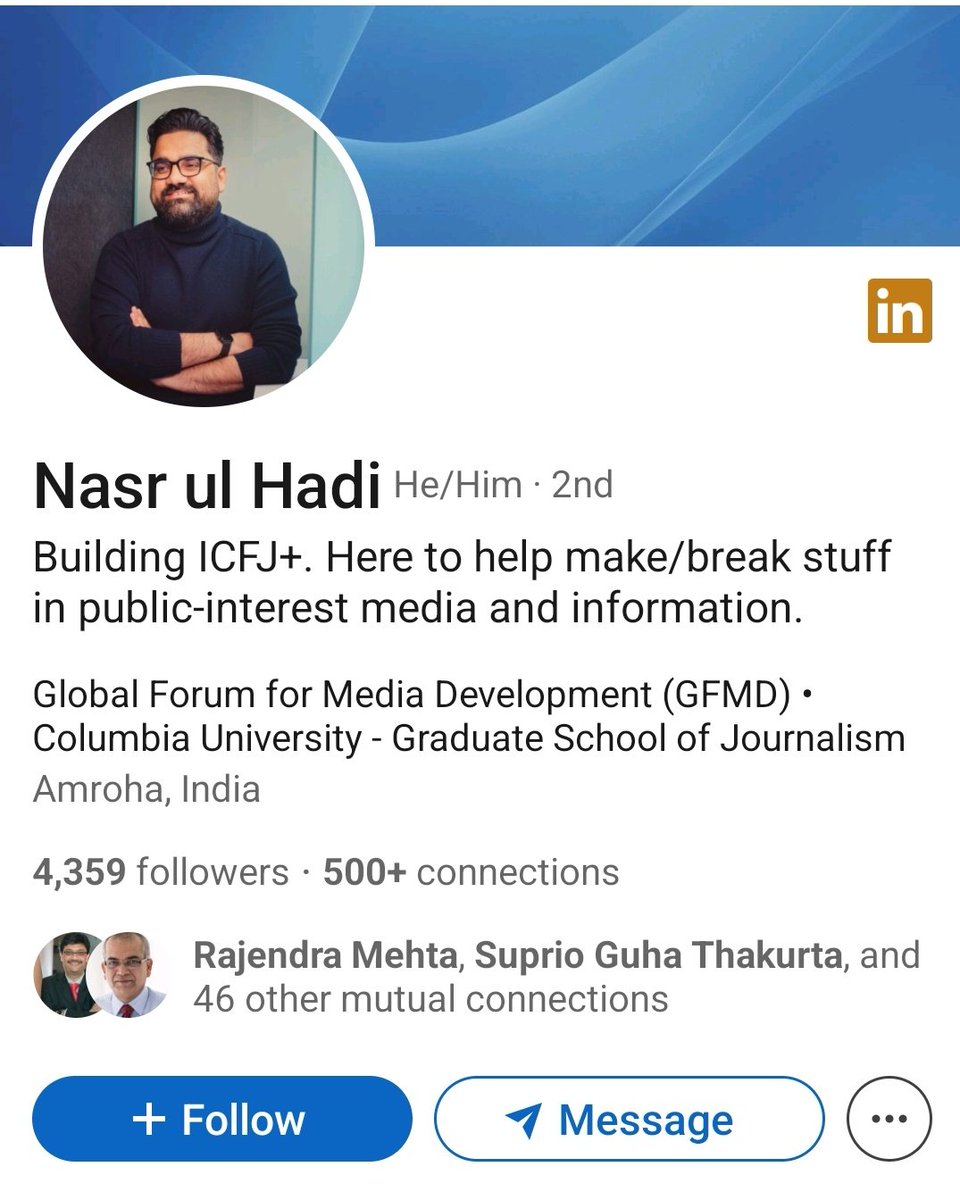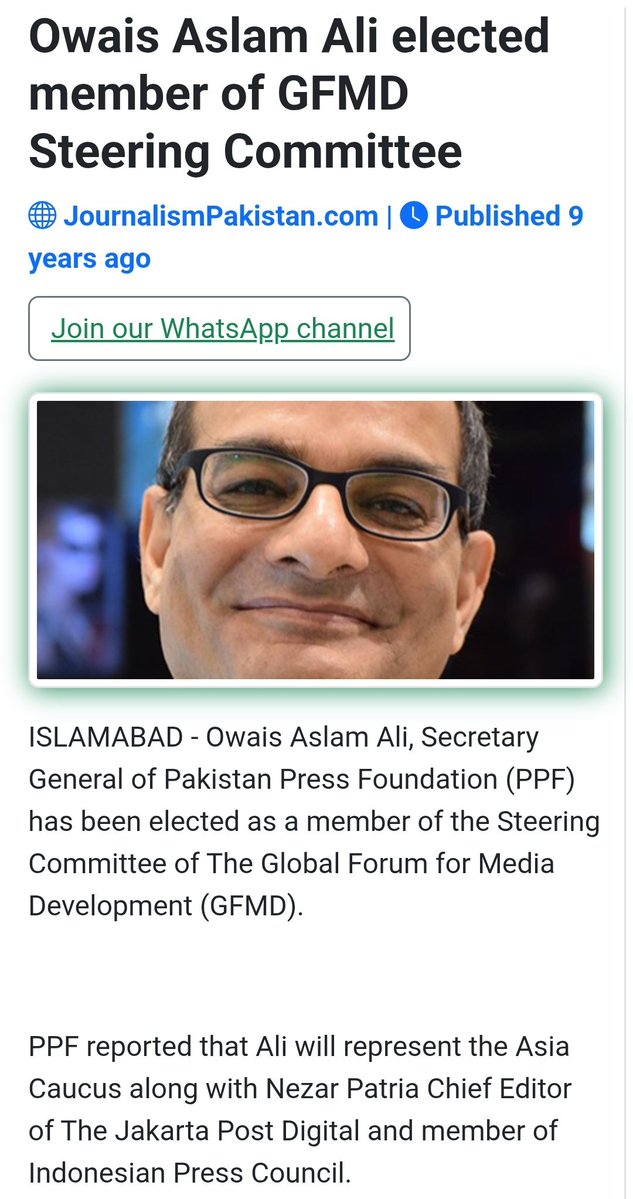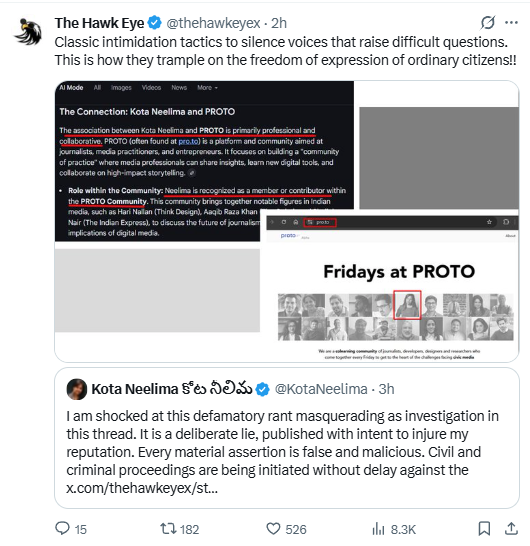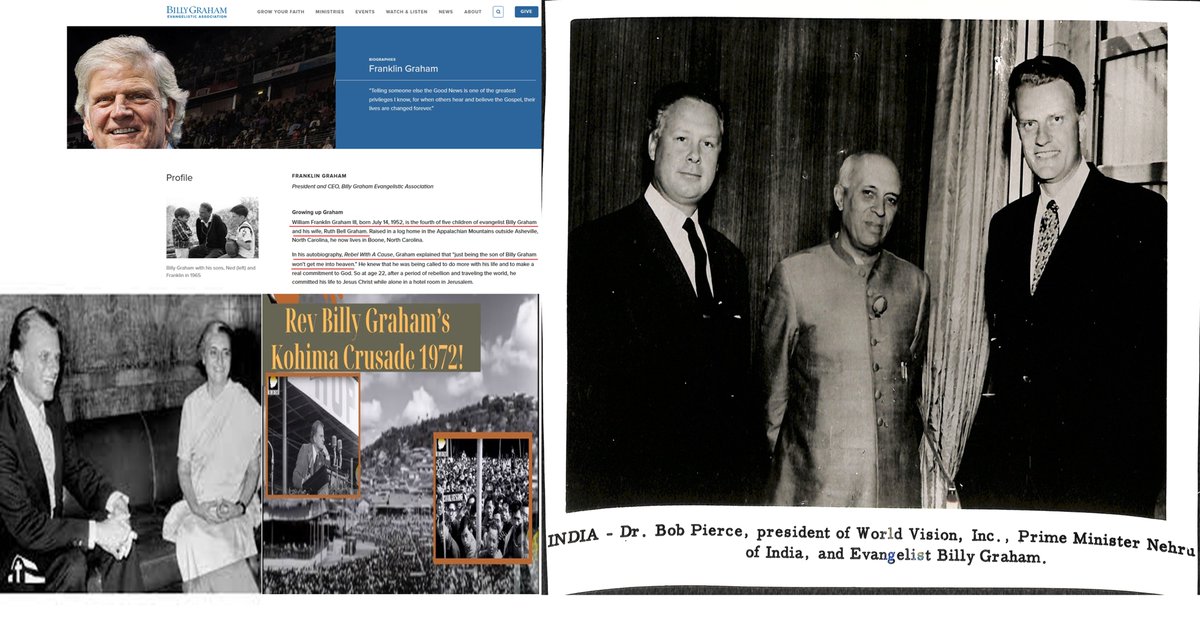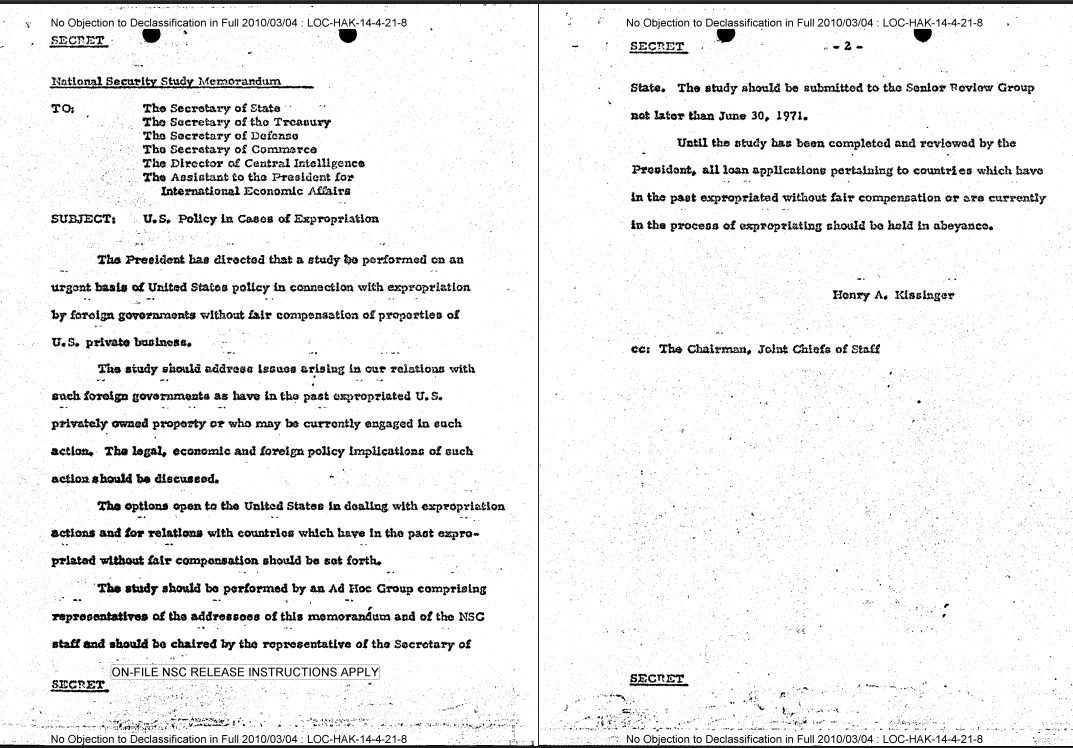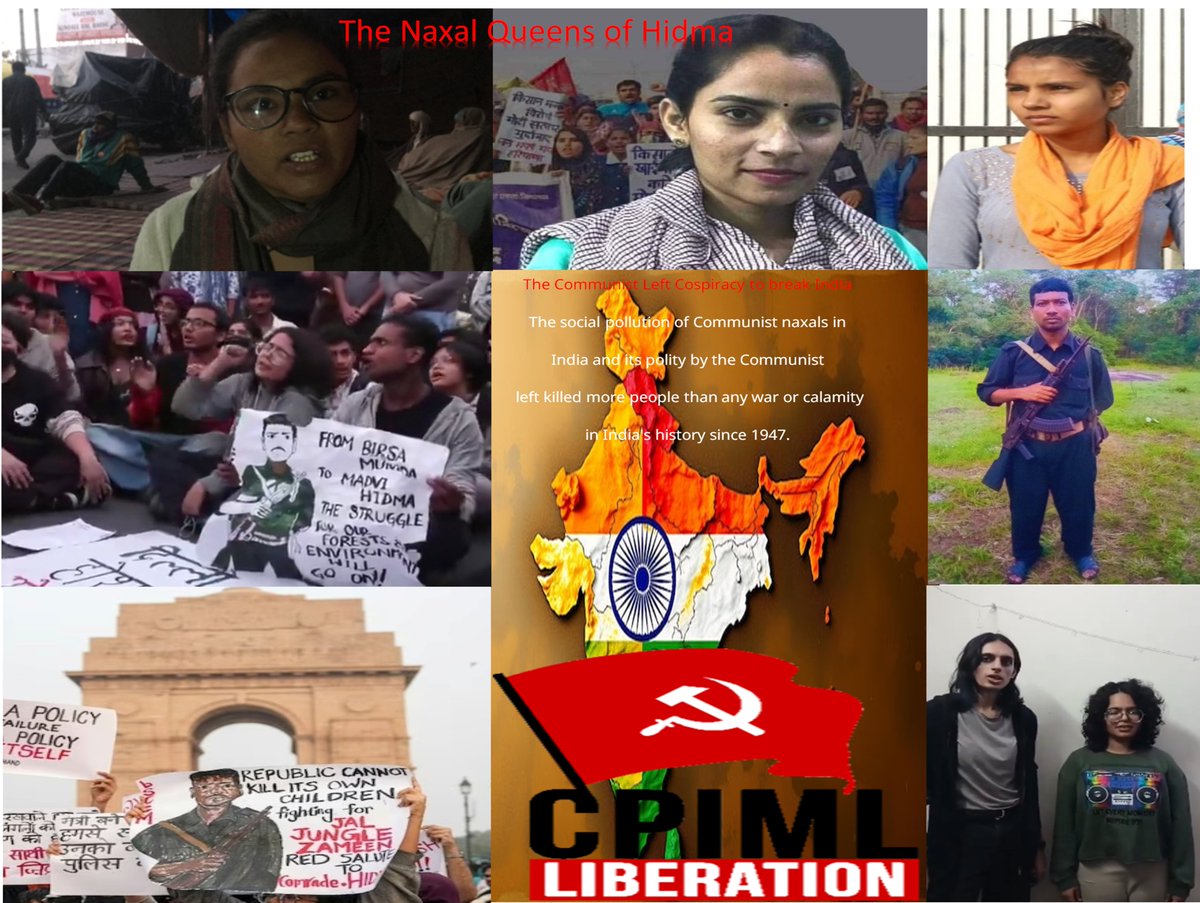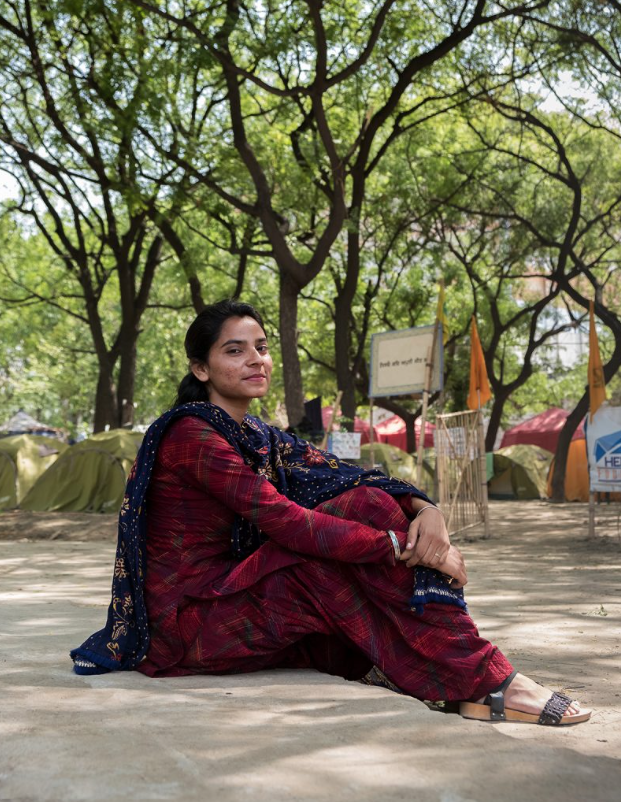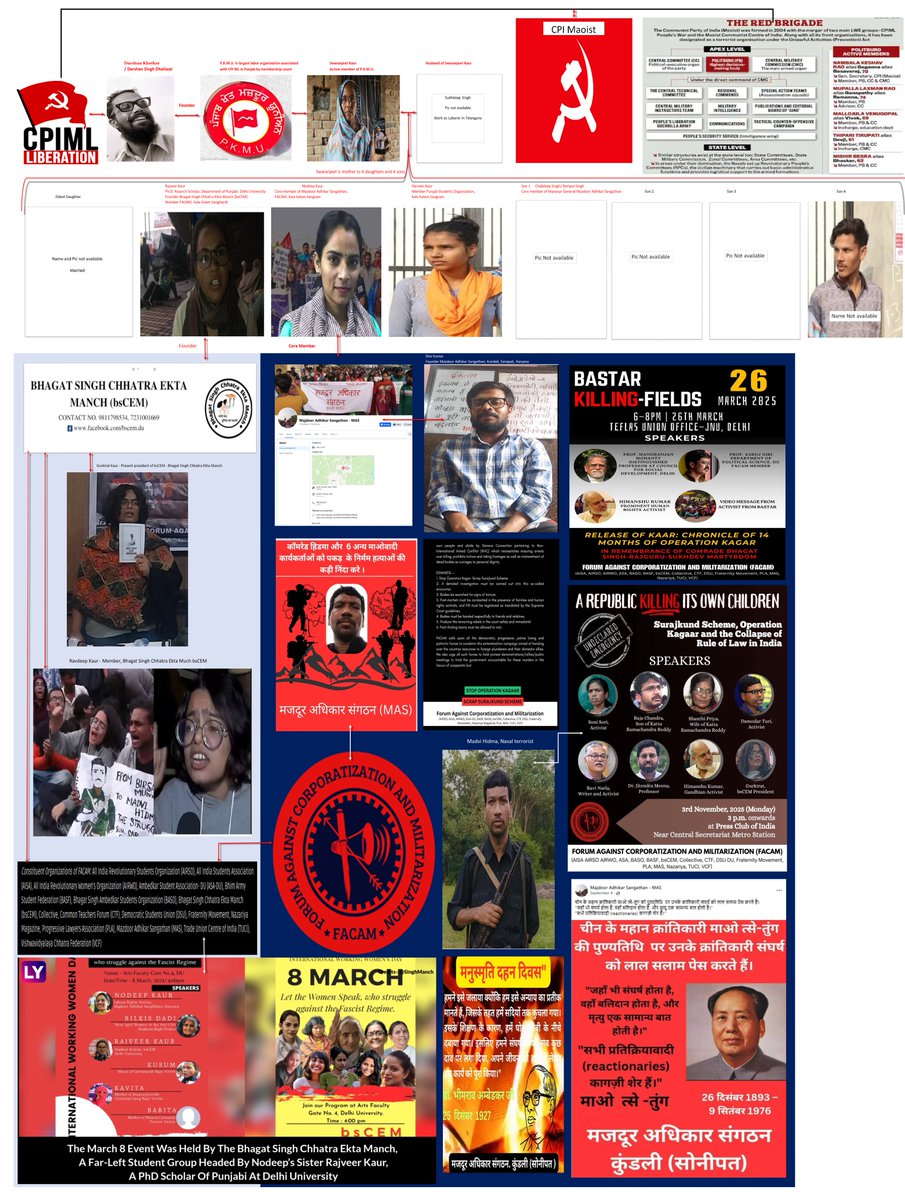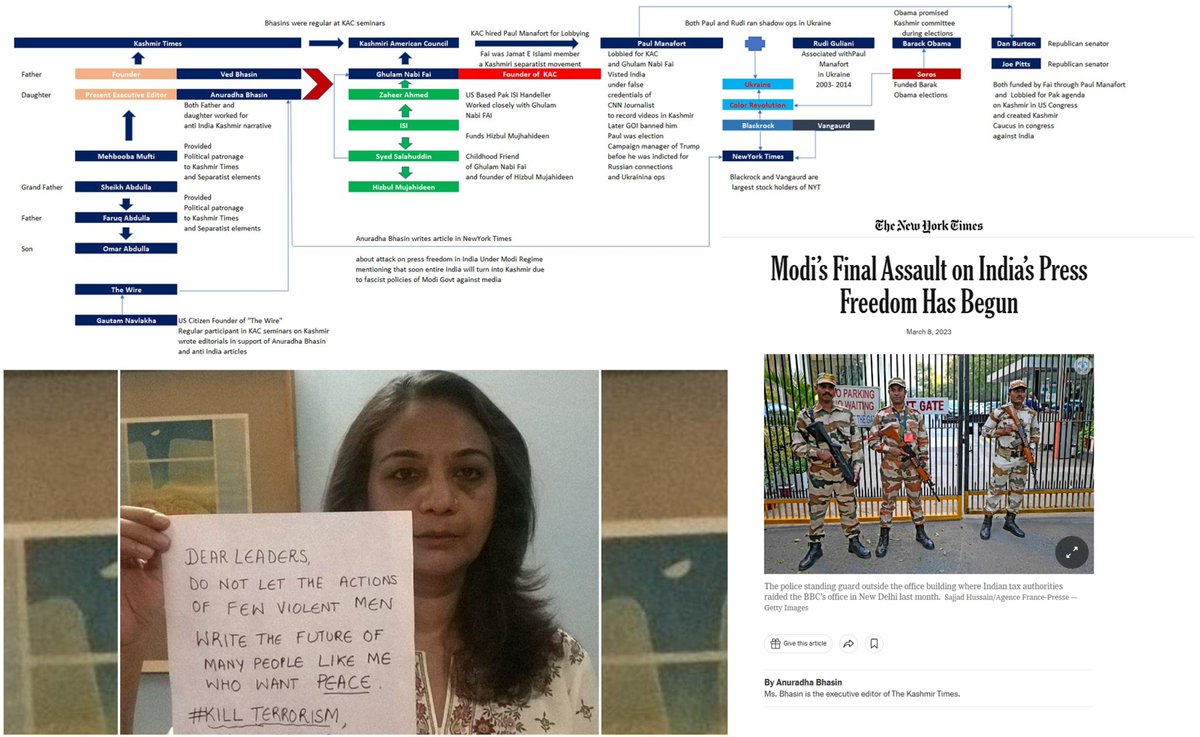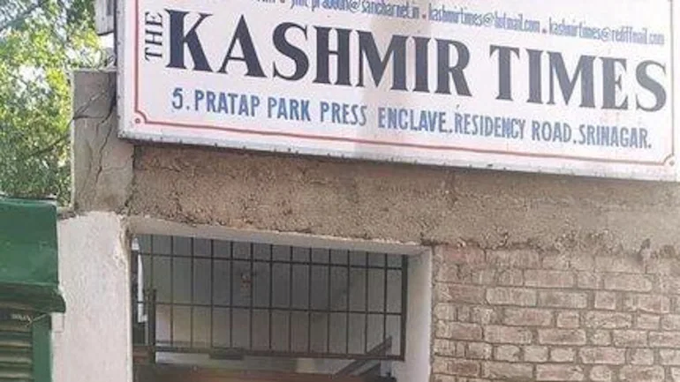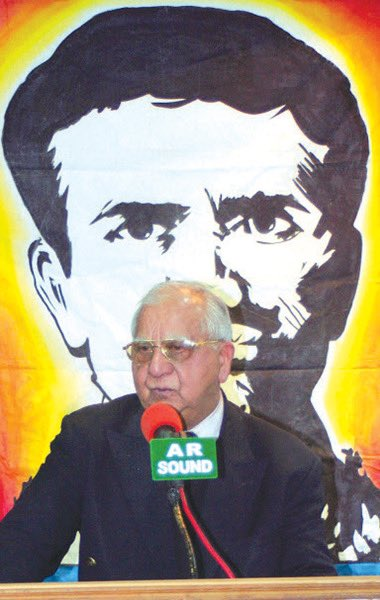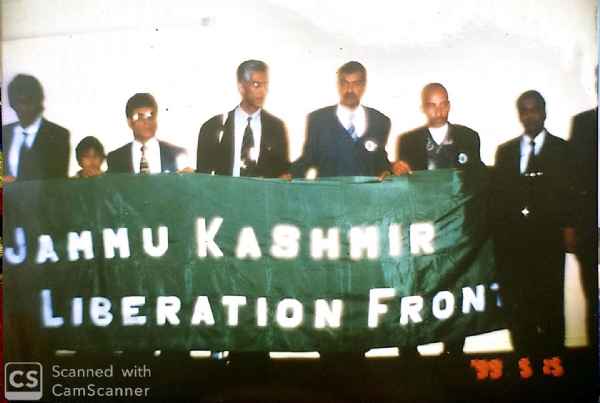⭐️Vedic Origin of the Universe - Families of the Vedic Gods
#Thread
What is the origin of the universe in Hindu Vedic Culture:
#Hinduism #Vedic #India #Puran #Upnishda #Samhita #Aadishakti #Brahman twitter.com/i/web/status/1…
#Thread
What is the origin of the universe in Hindu Vedic Culture:
#Hinduism #Vedic #India #Puran #Upnishda #Samhita #Aadishakti #Brahman twitter.com/i/web/status/1…

1. In Vedic scriptures There is a primordial cosmic force mentioned, that is believed to be beyond Human understanding: -
Brahman - Masculine aspect of this force
Shakti - Feminine aspect of this force, which can be more powerful than its counterpart.
Brahman is considered a… twitter.com/i/web/status/1…

Brahman - Masculine aspect of this force
Shakti - Feminine aspect of this force, which can be more powerful than its counterpart.
Brahman is considered a… twitter.com/i/web/status/1…


2. During the initial days of the universe, 3 supreme deities popped up, from Brahman, in the below order:
Vishnu - The god of Preservation
Brahma - The god of Creation
Shiva - The god of Destruction
#Hinduism #Vedic #India #Puran #Upnishda #Samhita #Aadishakti #Brahman twitter.com/i/web/status/1…
Vishnu - The god of Preservation
Brahma - The god of Creation
Shiva - The god of Destruction
#Hinduism #Vedic #India #Puran #Upnishda #Samhita #Aadishakti #Brahman twitter.com/i/web/status/1…
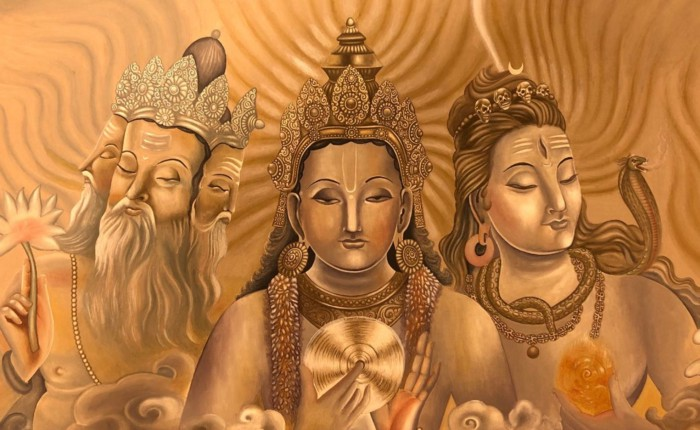
3. Through Shakti, 3 supreme goddesses popped up, who would act as consorts to the above-mentioned respective deities:-
Lakshmi - Goddess of luck and wealth, consort of Vishnu.
Saraswati - Goddess of knowledge, music, and arts, also a former river goddess (the supposed real-life… twitter.com/i/web/status/1…
Lakshmi - Goddess of luck and wealth, consort of Vishnu.
Saraswati - Goddess of knowledge, music, and arts, also a former river goddess (the supposed real-life… twitter.com/i/web/status/1…

4. Hinduism recognizes two eternal principles mentioned in the Vedas, the Bhagavadgita, and other Hindu scriptures. They’re Purusha and Prakriti. Also known. as Brahman and Brahmi, Isvara and Isvari, Siva and Shakti, Narayana and Narayani. The Gita declares that seated in… twitter.com/i/web/status/1… 

5. In Vedic theology Purush is the supreme being which is denoted as "Brahman" in the Vedic scriptures. The name "Brahman" is derived from the Sanskrit word "Brah" which means to expand, develop, grow, and enlarge. So Brahman is considered the highest self, a static actuality… twitter.com/i/web/status/1… 

6. Prakriti is the set of eternal, indestructible, and indivisible realities that produce modifications.
Maya is the modification of Prakriti. It represents the natural universe we experience.
Tattvas are the collection of ceaseless and original realities which constitute… twitter.com/i/web/status/1…
Maya is the modification of Prakriti. It represents the natural universe we experience.
Tattvas are the collection of ceaseless and original realities which constitute… twitter.com/i/web/status/1…

7. Nature in the English sense of the word represents the modifications of Prakriti, but maybe not Prakriti itself. It’s the same as Sambhuti or Maya.
Asambhuti or Mula Prakriti is your second ceaseless Principle of existence, alongside Unmanifested Brahman in which everything… twitter.com/i/web/status/1…
Asambhuti or Mula Prakriti is your second ceaseless Principle of existence, alongside Unmanifested Brahman in which everything… twitter.com/i/web/status/1…

8. How the Family tree of Gods evolved:
Brahma had several mind-born children, who are known as Manasaputra, most of them are primordial rishis or sages and some minor gods:-
Kumaras - Four celibate siblings, who have the appearance of children, they roam around the material and… twitter.com/i/web/status/1…

Brahma had several mind-born children, who are known as Manasaputra, most of them are primordial rishis or sages and some minor gods:-
Kumaras - Four celibate siblings, who have the appearance of children, they roam around the material and… twitter.com/i/web/status/1…


Brahma's children
9. Angiras - A powerful primordial rishi and one of the saptarishis.
Bhrigu - Another rishi among Saptarishi, who also acts as the facilitator of Creation. He married Khyati and Paloma. He had few children with them.
Chitragupta - Divine record keeper, who… twitter.com/i/web/status/1…


9. Angiras - A powerful primordial rishi and one of the saptarishis.
Bhrigu - Another rishi among Saptarishi, who also acts as the facilitator of Creation. He married Khyati and Paloma. He had few children with them.
Chitragupta - Divine record keeper, who… twitter.com/i/web/status/1…



Brahma's children
10. Daksha - (God of rituals) and another facilitator of creation, he had two wives - Prasuti and Asikni, they had a lot of daughters, who became wives of other gods and powerful rishis. Once he got decapitated and his head was replaced by a goat head.
Jambavan… twitter.com/i/web/status/1…

10. Daksha - (God of rituals) and another facilitator of creation, he had two wives - Prasuti and Asikni, they had a lot of daughters, who became wives of other gods and powerful rishis. Once he got decapitated and his head was replaced by a goat head.
Jambavan… twitter.com/i/web/status/1…


Brahma's children
11. Pulaha - Another member of Saptarishi
Pulastya - Another member of Saptarishi
Shatarupa - First Woman
Swayambhuva Manu - First Man
#Hinduism #Vedic #India #Puran #Upnishda #Samhita #Aadishakti #BRAHMAN twitter.com/i/web/status/1…
11. Pulaha - Another member of Saptarishi
Pulastya - Another member of Saptarishi
Shatarupa - First Woman
Swayambhuva Manu - First Man
#Hinduism #Vedic #India #Puran #Upnishda #Samhita #Aadishakti #BRAHMAN twitter.com/i/web/status/1…

12. Vashishta - Powerful and revered sage and a
member of Saptarishi
Atri - Another powerful and revered sage and a
member of Saptarishi
Gautama - A powerful sage, who is mostly known
for cursing his wife, Ahalya
Ruci - A revered primordial… twitter.com/i/web/status/1…
member of Saptarishi
Atri - Another powerful and revered sage and a
member of Saptarishi
Gautama - A powerful sage, who is mostly known
for cursing his wife, Ahalya
Ruci - A revered primordial… twitter.com/i/web/status/1…

Brahma's Children
13. Adharma - Personification of Dharma’s antonym
Himsa - Personification of Violence
Ahalya - A beautiful woman created by Brahma, to rival Apsara, who were boasting about their beauty.
#Hinduism #Vedic #India #Puran #Upnishda #Samhita #Aadishakti #BRAHMAN twitter.com/i/web/status/1…
13. Adharma - Personification of Dharma’s antonym
Himsa - Personification of Violence
Ahalya - A beautiful woman created by Brahma, to rival Apsara, who were boasting about their beauty.
#Hinduism #Vedic #India #Puran #Upnishda #Samhita #Aadishakti #BRAHMAN twitter.com/i/web/status/1…
14. Swayambhuva Manu and his wife Shatarupa, the mind-born children of Brahma were the first Human male and female, they had a few daughters:-
Ahuti - She married sage Ruci
Devahuti - She married sage Kardama
Prasuti - She married Daksha
#Hinduism #Vedic #India #Puran #Upnishda… twitter.com/i/web/status/1…
Ahuti - She married sage Ruci
Devahuti - She married sage Kardama
Prasuti - She married Daksha
#Hinduism #Vedic #India #Puran #Upnishda… twitter.com/i/web/status/1…

14. Daksha (God of rituals) had married Prasuti and Asikni (daughter of Panchajana) and had a lot of daughters, who went on to marry Primordial sages and gods and gave birth to many gods, themselves:-
13 of them became wives of Yama (God of Death)
Sraddha - Personification of… twitter.com/i/web/status/1…
13 of them became wives of Yama (God of Death)
Sraddha - Personification of… twitter.com/i/web/status/1…
15. Daughters of Daksha:
Khyati married Bhrigu
Sambhuti married Marichi
Smriti married Angiras
Priti (Goddess of love) and Riti (Goddess of affection) married Kamadeva (God of Sex).
Kshama married Pulaha
Sannati married Kratu
Urjja (Also a personification of the Ursa Major… twitter.com/i/web/status/1…
Khyati married Bhrigu
Sambhuti married Marichi
Smriti married Angiras
Priti (Goddess of love) and Riti (Goddess of affection) married Kamadeva (God of Sex).
Kshama married Pulaha
Sannati married Kratu
Urjja (Also a personification of the Ursa Major… twitter.com/i/web/status/1…
16. Daughters of Daksha
Another 13 got married to Kashyapa Rishi
Aditi (Goddess of Sky)
Diti
Danu
Arishta
Surasa
Surabhi/Kamadenu
Vinata
Tamra
Krodhavasa
Ira
Kadru
Vishwa
Muni
Diti and Danu's children started Asura Lineage.
Children of Diti were Daitya and children of Danu were… twitter.com/i/web/status/1…
Another 13 got married to Kashyapa Rishi
Aditi (Goddess of Sky)
Diti
Danu
Arishta
Surasa
Surabhi/Kamadenu
Vinata
Tamra
Krodhavasa
Ira
Kadru
Vishwa
Muni
Diti and Danu's children started Asura Lineage.
Children of Diti were Daitya and children of Danu were… twitter.com/i/web/status/1…
17. Daughters of Daksha:
27 of his daughters who represent 27 major Nakshatras/constellations in the night sky got married to Chandra (and I don’t know the English names for these constellations)
Ashvini/Aswathy
Bharani
Karthika
Rohini
Mrigashira/Makayiram
Ardra/Thiruvathira… twitter.com/i/web/status/1…
27 of his daughters who represent 27 major Nakshatras/constellations in the night sky got married to Chandra (and I don’t know the English names for these constellations)
Ashvini/Aswathy
Bharani
Karthika
Rohini
Mrigashira/Makayiram
Ardra/Thiruvathira… twitter.com/i/web/status/1…

18. Sage Angiras married Smriti and their son is:- Brihaspati - Guru of Devas and personification of Jupiter Sage Bhrigu married Khyati and Paloma and their children are:- Alakshmi - Goddess of Misfortune Lakshmi - Goddess of luck and wealth Shukracharya - Guru of Asuras and… twitter.com/i/web/status/1… 

19. Kratu (Brahma's Son) married Sannati and they had:-
60,000 Bhalakhiyas, or thumb-sized Rishis
Marichi(Brahma's Son) married, Kardama’s daughter, Kala, with whom he had:-
Kashyapa - A revered primordial sage, who is also credited for being the progenitor of most of the life… twitter.com/i/web/status/1…
60,000 Bhalakhiyas, or thumb-sized Rishis
Marichi(Brahma's Son) married, Kardama’s daughter, Kala, with whom he had:-
Kashyapa - A revered primordial sage, who is also credited for being the progenitor of most of the life… twitter.com/i/web/status/1…
20. Kardama (Brahma's Son) married Devahutti and had:-
Kapila - A primordial sage, founder of the Samkhya school of teaching.
Anasuya - The above-mentioned wife of Atri and father of Durvasa, Chandra, and Dattatreya
Arundhati - Vashishta’a wife
Jaya - Gatekeeper of Vishnuloka… twitter.com/i/web/status/1…
Kapila - A primordial sage, founder of the Samkhya school of teaching.
Anasuya - The above-mentioned wife of Atri and father of Durvasa, Chandra, and Dattatreya
Arundhati - Vashishta’a wife
Jaya - Gatekeeper of Vishnuloka… twitter.com/i/web/status/1…
21. Vashishta (Brahma's Son) married Arundhati and had:-
Maharishi Shakti - A revered sage, like others
Maharishi Shakti and his wife, Adrushyanti had:-
Parasara - Another revered sage
Parasara had a child with a fisherwoman, Satyavati, with whom he had:-
Vyasa - The sage who was… twitter.com/i/web/status/1…
Maharishi Shakti - A revered sage, like others
Maharishi Shakti and his wife, Adrushyanti had:-
Parasara - Another revered sage
Parasara had a child with a fisherwoman, Satyavati, with whom he had:-
Vyasa - The sage who was… twitter.com/i/web/status/1…
22. Brihaspati, Son of Brahma and the Guru of Devas married Tara (Goddess of Happiness), who was born out of a ritual pyre and they had:-
Bharadvaja - A revered primordial Sage
Kacha - A sage who is the disciple of Shukracharya
Kesari - A Vanara, known for being the father of… twitter.com/i/web/status/1…
Bharadvaja - A revered primordial Sage
Kacha - A sage who is the disciple of Shukracharya
Kesari - A Vanara, known for being the father of… twitter.com/i/web/status/1…
23. Vayu, Son of Brahma and the god of wind had spiritual children:-
Hanuman - God of strength, Courage, and devotion and a Chiranjeevi (Immortal).
Bhima - One of the five Pandava brothers
#Hinduism #Vedic #India #Puran #Upnishda twitter.com/i/web/status/1…
Hanuman - God of strength, Courage, and devotion and a Chiranjeevi (Immortal).
Bhima - One of the five Pandava brothers
#Hinduism #Vedic #India #Puran #Upnishda twitter.com/i/web/status/1…

24. Vishwakarma, the god of architecture, had a couple of children, with Gayatri (an avatar of Shakti, she represents Gayatri Mantra), and an Asura child with an Asura woman, Virochana, and a bunch of spiritual children:-
#Hinduism #Vedic #India #Puran #Upnishda
#Hinduism #Vedic #India #Puran #Upnishda

25. Children of Vishvkarma:
Sanjana - Goddess of clouds, shadows, and dusk, was the daughter he had with Gayatri.
Trisiras - An Asura, who is Prahald’s maternal grandson
Nala - A Vanara, who was responsible for the creation of Rama Setu, due to the wisdom that he had received… twitter.com/i/web/status/1…
Sanjana - Goddess of clouds, shadows, and dusk, was the daughter he had with Gayatri.
Trisiras - An Asura, who is Prahald’s maternal grandson
Nala - A Vanara, who was responsible for the creation of Rama Setu, due to the wisdom that he had received… twitter.com/i/web/status/1…
26. Children of Vishvkarma:
Manu - He was cursed to work as a blacksmith and he was the first blacksmith ever.
Maya - The first carpenter. He was the mythical author of Vastu Shastra.
Tvastar - The first Metalworker
Shilpi - The first stonemason
Visvajna - The first goldsmith… twitter.com/i/web/status/1…
Manu - He was cursed to work as a blacksmith and he was the first blacksmith ever.
Maya - The first carpenter. He was the mythical author of Vastu Shastra.
Tvastar - The first Metalworker
Shilpi - The first stonemason
Visvajna - The first goldsmith… twitter.com/i/web/status/1…
27. Agni, the god of fire, married Svaha, the goddess of sacrifice, with whom, he had:-
Pavaka - The purifier
Pavamana - The Purifying
Suchi - The Purity
Nila - A Vanara, who acted as commander-in-chief for the Vanara army, during the Battle of Lanka
Swarochisha Manu - Manu of… twitter.com/i/web/status/1…
Pavaka - The purifier
Pavamana - The Purifying
Suchi - The Purity
Nila - A Vanara, who acted as commander-in-chief for the Vanara army, during the Battle of Lanka
Swarochisha Manu - Manu of… twitter.com/i/web/status/1…

28. Kashyapa Rishi , the primordial sage, married 13 daughters of Daksha, and with each, he had different and unique children spaning to birds, animals, asuras, and 12 Aditya.
#Hinduism #Vedic #India #Puran #Upnishda
#Hinduism #Vedic #India #Puran #Upnishda

29. Children of Kashyap Rishi
Children from Aditi, or Adityas:-
Varuna - God of water, sea, and sky
#Hinduism #Vedic #India #Puran #Upnishda twitter.com/i/web/status/1…
Children from Aditi, or Adityas:-
Varuna - God of water, sea, and sky
#Hinduism #Vedic #India #Puran #Upnishda twitter.com/i/web/status/1…

29(a) Indra - God of lightning, thunder, and rain also king of Devas
#Hinduism #Vedic #India #Puran #Upnishda twitter.com/i/web/status/1…
#Hinduism #Vedic #India #Puran #Upnishda twitter.com/i/web/status/1…

29(b) Mitra - God of friendship
Aryaman - God of customs and the Milky Way
Dhata - God of health and domestic tranquility
Savitar - God of Sunrays
Pushan - God of meetings, marriages, journeys, roads, cattle
Surya - Sun God
Vamana - 5th Avatar of Vishnu, a dwarf sage, born to… twitter.com/i/web/status/1…
Aryaman - God of customs and the Milky Way
Dhata - God of health and domestic tranquility
Savitar - God of Sunrays
Pushan - God of meetings, marriages, journeys, roads, cattle
Surya - Sun God
Vamana - 5th Avatar of Vishnu, a dwarf sage, born to… twitter.com/i/web/status/1…

29(c) Children of Diti:-
Daityas - The illusionist clan of Asuras, its members include - Hiranyaksha, Hiranyakashipu, Holika, and their successors including Prahlada and Mahabali.
#Hinduism #Vedic #India #Puran #Upnishda twitter.com/i/web/status/1…
Daityas - The illusionist clan of Asuras, its members include - Hiranyaksha, Hiranyakashipu, Holika, and their successors including Prahlada and Mahabali.
#Hinduism #Vedic #India #Puran #Upnishda twitter.com/i/web/status/1…

29(d) Children of Danu:-
Danava - Another clan of Asuras, who are cannibals and are slaves to Rakshasas.
#Hinduism #Vedic #India #Puran #Upnishda twitter.com/i/web/status/1…
Danava - Another clan of Asuras, who are cannibals and are slaves to Rakshasas.
#Hinduism #Vedic #India #Puran #Upnishda twitter.com/i/web/status/1…

29(e) Children of Arishta:-
Gandharva - Celestial singers, who live in Svarga Loka
#Hinduism #Vedic #India #Puran #Upnishda twitter.com/i/web/status/1…
Gandharva - Celestial singers, who live in Svarga Loka
#Hinduism #Vedic #India #Puran #Upnishda twitter.com/i/web/status/1…

29(f) Children of Surasa:-
Snakes
Children of Surabhi/Kamadenu:-
Cows and Buffaloes
Nandi - Shiva’s Vahana (Animal Vehicle)
#Hinduism #Vedic #India #Puran #Upnishda twitter.com/i/web/status/1…
Snakes
Children of Surabhi/Kamadenu:-
Cows and Buffaloes
Nandi - Shiva’s Vahana (Animal Vehicle)
#Hinduism #Vedic #India #Puran #Upnishda twitter.com/i/web/status/1…

29(g) Children of Vinata:-
Aruna - God of Sunlight and the charioteer of his half-brother, Surya
Garuda - King of birds and he serves as a Vahana for Vishnu
Children of Tamra:-
Birds
#Hinduism #Vedic #India #Puran #Upnishda twitter.com/i/web/status/1…
Aruna - God of Sunlight and the charioteer of his half-brother, Surya
Garuda - King of birds and he serves as a Vahana for Vishnu
Children of Tamra:-
Birds
#Hinduism #Vedic #India #Puran #Upnishda twitter.com/i/web/status/1…

29(h) Children of Krodhavasa:-
Ferocious animals, fish, and creatures with sharp teeth
Children of Ira:-
Trees, creepers, shrubs, and bushes
Children of Kadru:-
Naga - divine shape-shifting serpent beings. Famous Nagas include; Adishesha, Vasuki, Kalia, Karkotaka, and many more… twitter.com/i/web/status/1…
Ferocious animals, fish, and creatures with sharp teeth
Children of Ira:-
Trees, creepers, shrubs, and bushes
Children of Kadru:-
Naga - divine shape-shifting serpent beings. Famous Nagas include; Adishesha, Vasuki, Kalia, Karkotaka, and many more… twitter.com/i/web/status/1…

29(i) Children of Vishwa:-
Yaksha - Nature Spirits
Children of Muni:-
Apsara - Celestial dancers, most famous among them include Urvashi, Rambha, Menaka, Thilothama, Anjana(Hanuman’s mother who, due to a curse, incarnated as a vanara in Earth), and several others.
#Hinduism… twitter.com/i/web/status/1…
Yaksha - Nature Spirits
Children of Muni:-
Apsara - Celestial dancers, most famous among them include Urvashi, Rambha, Menaka, Thilothama, Anjana(Hanuman’s mother who, due to a curse, incarnated as a vanara in Earth), and several others.
#Hinduism… twitter.com/i/web/status/1…

30. . Chandra, the Moon god had few children with his 27 wives, especially with his chief consort, Rohini, and also a child, born due to an affair with Tara:- Varchas - God of Moonlight Budha - Personification of Mercury Bhadra - She was married to sage Uthaya #Hinduism #Vedic… twitter.com/i/web/status/1… 

31. Shiva and his wife, Parvati had 2 sons:-
Ganesha - God of wisdom and remover of Obstacles
Karthikeya - God of war
Shiva was also responsible for the birth of:-
Narmada - River goddess personifying Narmada river
#Hinduism #Vedic #India #Puran #Upnishda twitter.com/i/web/status/1…
Ganesha - God of wisdom and remover of Obstacles
Karthikeya - God of war
Shiva was also responsible for the birth of:-
Narmada - River goddess personifying Narmada river
#Hinduism #Vedic #India #Puran #Upnishda twitter.com/i/web/status/1…

32. Vishnu and his wife, Lakshmi had a son:-
Kamadeva - God of Sex
Shiva and Vishnu (in his Mohini form), gave birth to:-
Dharmasastha - God of celibacy
#Hinduism #Vedic #India #Puran #Upnishda twitter.com/i/web/status/1…
Kamadeva - God of Sex
Shiva and Vishnu (in his Mohini form), gave birth to:-
Dharmasastha - God of celibacy
#Hinduism #Vedic #India #Puran #Upnishda twitter.com/i/web/status/1…

33. Ganga, the another form of river goddess, married King Shantanu, of Hastinapura, he belongs to the Kuru clan of Chandravanshi (Lunar Dynasty), and they had a son:-
Bhishma - who played a major role in Mahabharata War
#Hinduism #Vedic #India #Puran #Upnishda twitter.com/i/web/status/1…
Bhishma - who played a major role in Mahabharata War
#Hinduism #Vedic #India #Puran #Upnishda twitter.com/i/web/status/1…

34. Sage Bharadvaja, with his wife, Susheela, had three children:-
Ilavida - Stepmother of Ravana and his siblings and mother of Kubera
Drona - He was the guru of Kuru princes and played a key role in Mahabharata War
Budha married Ila and had a son:-
Pururavas - King of the… twitter.com/i/web/status/1…
Ilavida - Stepmother of Ravana and his siblings and mother of Kubera
Drona - He was the guru of Kuru princes and played a key role in Mahabharata War
Budha married Ila and had a son:-
Pururavas - King of the… twitter.com/i/web/status/1…
35. Indra married an Asura woman of the Danav clan, Shachi:-
Jayanta - A warrior who occasionally pops up in various stories
Jayanti - Consort of Shukracharaya
Devasena - Goddess of war strategy and a consort of Karthikeya
Vali - Indra’s spiritual child and an elder brother of… twitter.com/i/web/status/1…
Jayanta - A warrior who occasionally pops up in various stories
Jayanti - Consort of Shukracharaya
Devasena - Goddess of war strategy and a consort of Karthikeya
Vali - Indra’s spiritual child and an elder brother of… twitter.com/i/web/status/1…

36. Surya married Sanjana and had:-
Yama - God of death and justice
Yamuna - River goddess personifying Yamuna river
Ashwini Twins- Twin gods of medicine
Vaivasvata Manu - The first man of current Manvantara and the Hindu counterpart of Noah from Abrahamic mythology.
Surya… twitter.com/i/web/status/1…
Yama - God of death and justice
Yamuna - River goddess personifying Yamuna river
Ashwini Twins- Twin gods of medicine
Vaivasvata Manu - The first man of current Manvantara and the Hindu counterpart of Noah from Abrahamic mythology.
Surya… twitter.com/i/web/status/1…

37. Shukracharya The Teacher of Asura's had a daughter with his wife, Jayanti:-
Devayani - Who got rescued and got married to a legendary king of the lunar dynasty, Yayati.
#Hinduism #Vedic #India #Puran #Upnishda twitter.com/i/web/status/1…
Devayani - Who got rescued and got married to a legendary king of the lunar dynasty, Yayati.
#Hinduism #Vedic #India #Puran #Upnishda twitter.com/i/web/status/1…

38. Sage Vishrava had kids Ilavida and a rakshasa woman named, Kaikasi:-
Kubera - God of wealth and chief of Yakshas
Ravana - A rakshasa king of Lanka, who abducted Rita, Ram’s wife and got killed by him in the end.
#Hinduism #Vedic #India #Puran #Upnishda twitter.com/i/web/status/1…
Kubera - God of wealth and chief of Yakshas
Ravana - A rakshasa king of Lanka, who abducted Rita, Ram’s wife and got killed by him in the end.
#Hinduism #Vedic #India #Puran #Upnishda twitter.com/i/web/status/1…

38(a) Kumbhakarna - A giant rakshasa, known for his six-month-long slumber and for his immense strength.
Vibishana - The righteous Rakshasa, who switched sides with his enemy, Rama, during the battle and became the king of Lanka after his brother’s death and also a member of… twitter.com/i/web/status/1…
Vibishana - The righteous Rakshasa, who switched sides with his enemy, Rama, during the battle and became the king of Lanka after his brother’s death and also a member of… twitter.com/i/web/status/1…

39. Vaivasvata Manu, or Satyavrata married a random woman named Shraddha and had:-
Ikshvaku - The founder of the Kosala Kingdom and the patriarch of Suryavanshi (Solar Dynasty), one of the two major royal dynasties of Hindu mythology, named after his grandfather, Surya, the Sun… twitter.com/i/web/status/1…
Ikshvaku - The founder of the Kosala Kingdom and the patriarch of Suryavanshi (Solar Dynasty), one of the two major royal dynasties of Hindu mythology, named after his grandfather, Surya, the Sun… twitter.com/i/web/status/1…

40. Ashwin Twins, gods of medicine had spiritual children:-
Nakula - One of the Pandava Brothers
Sahadeva - Another Pandava brother
#Hinduism #Vedic #India #Puran #Upnishda twitter.com/i/web/status/1…
Nakula - One of the Pandava Brothers
Sahadeva - Another Pandava brother
#Hinduism #Vedic #India #Puran #Upnishda twitter.com/i/web/status/1…

41. Sage Gautama and his wife, Ahalya (Brahma's Daughter) had:-
Shatananda - Family priest of a Solar Dynasty king, Janaka
Kripa - Guru of Kuru princes and one of the Chiranjeevi (Immortals)
Kripi - Drona’s wife and Ashwatama’s mother
#Hinduism #Vedic #India #Puran #Upnishda twitter.com/i/web/status/1…
Shatananda - Family priest of a Solar Dynasty king, Janaka
Kripa - Guru of Kuru princes and one of the Chiranjeevi (Immortals)
Kripi - Drona’s wife and Ashwatama’s mother
#Hinduism #Vedic #India #Puran #Upnishda twitter.com/i/web/status/1…

42. Drona and Kripi had:-
Ashwatama - A major combatant of the Mahabharata war and a Chiranjeevi (One of the 8 Immortals).
#Hinduism #Vedic #India #Puran #Upnishda twitter.com/i/web/status/1…
Ashwatama - A major combatant of the Mahabharata war and a Chiranjeevi (One of the 8 Immortals).
#Hinduism #Vedic #India #Puran #Upnishda twitter.com/i/web/status/1…

43. Adharma (Son of Brahma) had kids with Himsa:-
Anarta - Personification of Falsehood
Nikriti - Personification of Immorality
Anarta and Nikriti had:-
Baya - Personification of Fear
Naraka - Personification of Hell
Maya - Personification of Deceit
Vedana - Personification of… twitter.com/i/web/status/1…
Anarta - Personification of Falsehood
Nikriti - Personification of Immorality
Anarta and Nikriti had:-
Baya - Personification of Fear
Naraka - Personification of Hell
Maya - Personification of Deceit
Vedana - Personification of… twitter.com/i/web/status/1…
43(a) Baya and Maya had:-
Mrtyu - Personification of Death
Naraka and Vedana:-
Dukha - Personification of Unhappiness
Mrtyu and Dukha had:-
Vyadhi - Personification of Disease
Jara - Personification of Decay
Sokha - Personification of Sorrow
Trishna - Personification of… twitter.com/i/web/status/1…
Mrtyu - Personification of Death
Naraka and Vedana:-
Dukha - Personification of Unhappiness
Mrtyu and Dukha had:-
Vyadhi - Personification of Disease
Jara - Personification of Decay
Sokha - Personification of Sorrow
Trishna - Personification of… twitter.com/i/web/status/1…
44. Yama, the god of death and justice had kids with 10 daughters of Daksha and a spiritual child:-
Sunita - She was known for tormenting innocent living beings.
Yudhishtra - Yama’s spiritual child and a member of Pandavas.
Kama - Personification of Desire
Darpa - Personification… twitter.com/i/web/status/1…
Sunita - She was known for tormenting innocent living beings.
Yudhishtra - Yama’s spiritual child and a member of Pandavas.
Kama - Personification of Desire
Darpa - Personification… twitter.com/i/web/status/1…

44(a)Shani had children with Manda and Neelima:-
Gulikan - An Avatar of Shiva
#Hinduism #Vedic #India #Puran #Upnishda twitter.com/i/web/status/1…
Gulikan - An Avatar of Shiva
#Hinduism #Vedic #India #Puran #Upnishda twitter.com/i/web/status/1…

45. Varaha, Vishnu’s 3rd Avatar and Bhudevi, Earth Goddess had:-
Mangala - Personification of Mars
#Hinduism #Vedic #India #Puran #Upnishda twitter.com/i/web/status/1…
Mangala - Personification of Mars
#Hinduism #Vedic #India #Puran #Upnishda twitter.com/i/web/status/1…
46. Maharishi Agastya, had a wife, Lopamudra, who got reincarnated as a river goddess, Kaveri, personifying the Kaveri river.
#Hinduism #Vedic #India #Puran #Upnishda twitter.com/i/web/status/1…
#Hinduism #Vedic #India #Puran #Upnishda twitter.com/i/web/status/1…

47. A Danava named Viprachati and a Daitya woman, Simhika, gave birth to:-
Rahu - One who is responsible for Solar Eclipse
Ketu - One who is responsible for Lunar Eclipse
#Hinduism #Vedic #India #Puran #Upnishda twitter.com/i/web/status/1…
Rahu - One who is responsible for Solar Eclipse
Ketu - One who is responsible for Lunar Eclipse
#Hinduism #Vedic #India #Puran #Upnishda twitter.com/i/web/status/1…

48. Avatars of Vishnu:- Dashavatar (10 incarnations to restore cosmic order):- Matsya - Giant fish, who saved the world from Maha Pralaya, or Great Flood, by rescuing Vaivasvata Manu, Shraddha, plants, animals, and saptarishis in a boat. Kurma - Giant Turtle, who bore the weight… twitter.com/i/web/status/1… 

49. Forms of Vishnu:-
Venkateshwara - Form of Vishnu in Venkateswara Temple, Tirupati.
Vaikuntha Kamalaja - Combined form of Vishnu and Lakshmi.
Vishwarupa - Cosmic form of Vishnu or Krishna
Padmanabha - Form of Vishnu in Padmanabhaswamy Temple, Thiruvananthapuram, Kerala.
Ananta… twitter.com/i/web/status/1…
Venkateshwara - Form of Vishnu in Venkateswara Temple, Tirupati.
Vaikuntha Kamalaja - Combined form of Vishnu and Lakshmi.
Vishwarupa - Cosmic form of Vishnu or Krishna
Padmanabha - Form of Vishnu in Padmanabhaswamy Temple, Thiruvananthapuram, Kerala.
Ananta… twitter.com/i/web/status/1…
50. Avatar of Shiva:-
Ardhanarishvara - A combined Form of Shiva and Parvati
Nataraja - God of Dance
Rudra - God of Hunting in Vedic religion, which later became an aspect of Shiva.
Pashupati - God of Animals
Bholenath - Lord of simplicity
Veerabhadra - Wild form of Shiva… twitter.com/i/web/status/1…
Ardhanarishvara - A combined Form of Shiva and Parvati
Nataraja - God of Dance
Rudra - God of Hunting in Vedic religion, which later became an aspect of Shiva.
Pashupati - God of Animals
Bholenath - Lord of simplicity
Veerabhadra - Wild form of Shiva… twitter.com/i/web/status/1…

51. kings and rulers of the Surya Vansh:-
Ikshvaku - The founder of the Kosala Kingdom and the patriarch of Suryavanshi (Solar Dynasty). Mandhatri Dilip -King Raghu’s father Janaka - Sita’s father and father of Videha. Harishchandra - Known for his stories of being an ideal… twitter.com/i/web/status/1…
Ikshvaku - The founder of the Kosala Kingdom and the patriarch of Suryavanshi (Solar Dynasty). Mandhatri Dilip -King Raghu’s father Janaka - Sita’s father and father of Videha. Harishchandra - Known for his stories of being an ideal… twitter.com/i/web/status/1…

52. Kings and rulers of the Chandra Vansh:-
Pururavas - King of the Prayaga kingdom and patriarch of Chandravanshi (Lunar Dynasty).
Nahusha - Grandson of Pururavas
Yayati - The Conquerer of world, who married Devayani and a Daitya woman, Sharmishta
Yadu - Yayati’s son, patriarch… twitter.com/i/web/status/1…
Pururavas - King of the Prayaga kingdom and patriarch of Chandravanshi (Lunar Dynasty).
Nahusha - Grandson of Pururavas
Yayati - The Conquerer of world, who married Devayani and a Daitya woman, Sharmishta
Yadu - Yayati’s son, patriarch… twitter.com/i/web/status/1…

52(a) Shri Krishna - God of Tenderness and Love, 8th incarnation of Vishnu.
#Hinduism #Vedic #India #Puran #Upnishda
#Hinduism #Vedic #India #Puran #Upnishda

There are so many armchair historians, Katha Vachaks, So called scientific historians who try to demean Hindutva and Vedic culture by terming it as some sort of story or a piece of fiction or mythology. But you as a sanatan dharma practitioner, as a Hindu shall be proud of your… twitter.com/i/web/status/1… 

• • •
Missing some Tweet in this thread? You can try to
force a refresh



